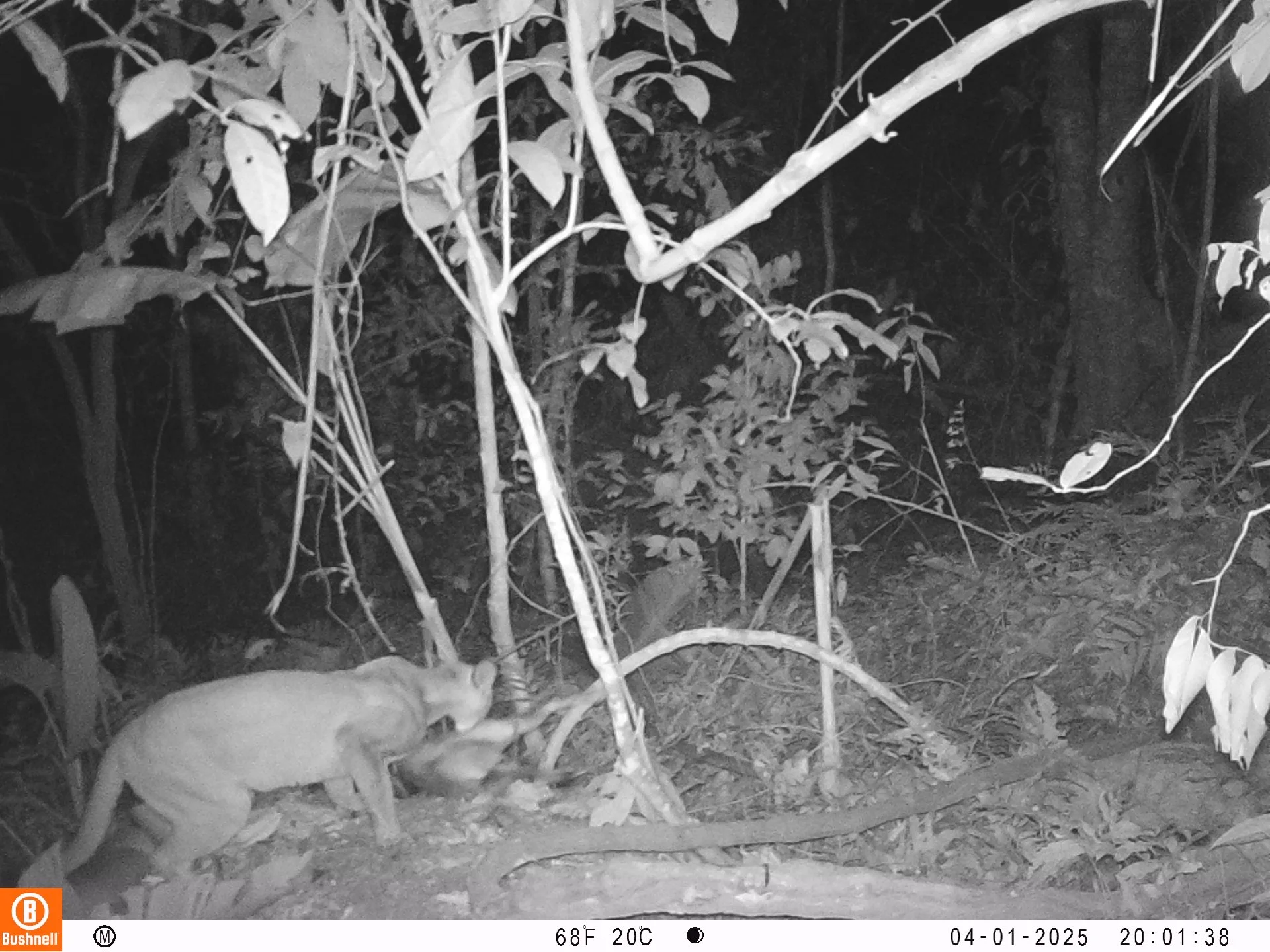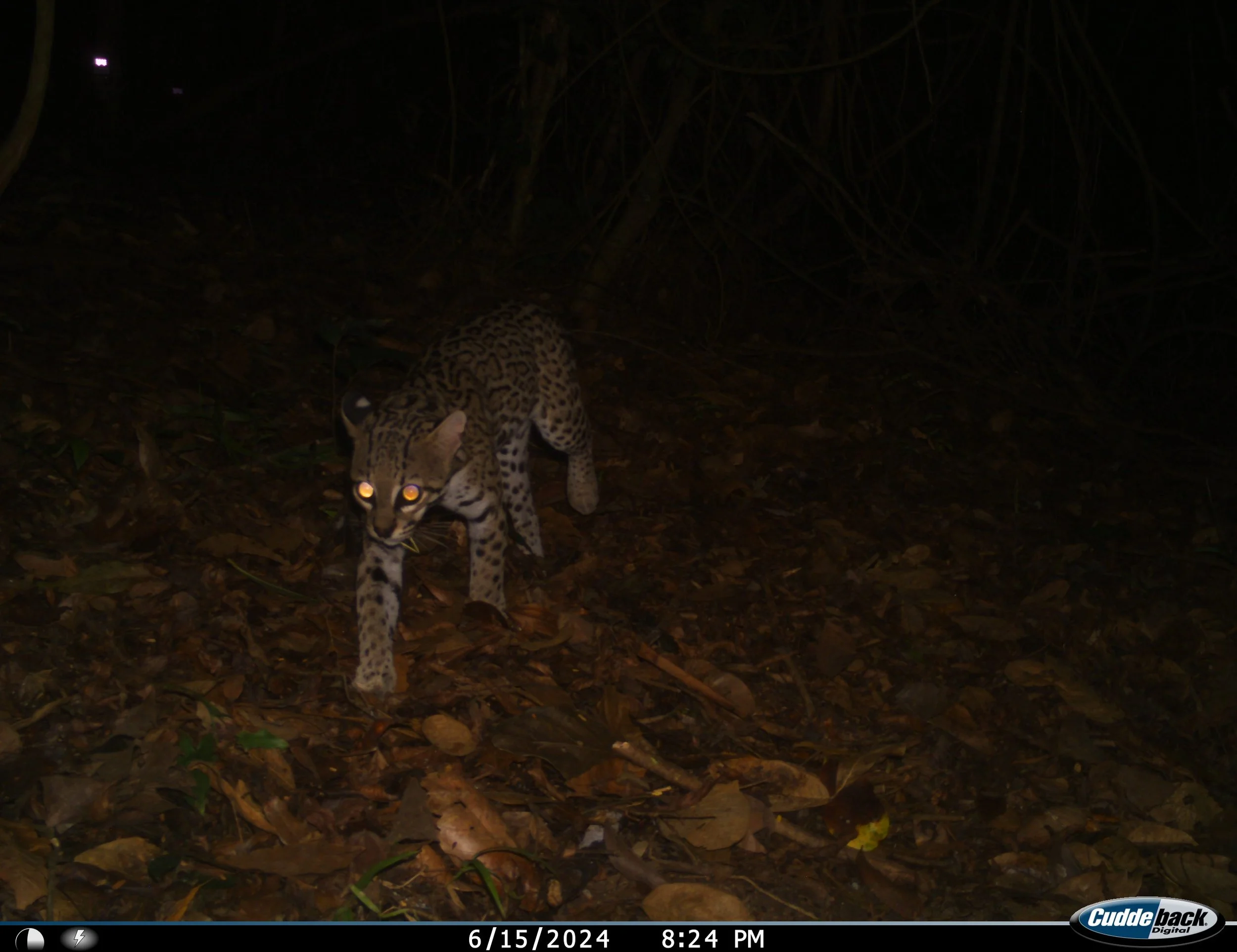Tracing the Jaguar’s Path
Ximena Rodríguez Rodríguez
What Impact Do Beliefs Have on Nature Conservation?
In Vista Hermosa, the upper part of our micro-watershed, folklore and stories of abundance have inspired an entire family to defend life and preserve the essence of the surrounding forest. However, old tales have also influenced how certain animal species—such as the jaguar—are perceived.
For generations, the jaguar has represented one of the strongest and most dangerous animals in the Sierra of Guerrero. It is one of the least likely animals you would encounter in person, yet its possible presence in the area provokes fear, curiosity, and even a sense of triumph if hunted. But the jaguar is more than that—it is also a species that inhabits healthy, diverse, and abundant ecosystems. That’s why, in 2010, biologist and director of Wild Felids Conservation, Fernando Ruíz, arrived in Vista Hermosa in search of this magnificent species.
With Fernando’s arrival, the family in Vista Hermosa was introduced to a different perspective on the jaguar. And although no jaguars were found during the 2010 monitoring, beliefs about this animal began to shift.
Fourteen years after that first monitoring effort, a jaguar was spotted in the tall trees of Vista Hermosa. Upon spotting the feline, fear and helplessness outweighed all other emotions, with the jaguar seen as a threat. With a lack of awareness being raised for the plight of jaguar conservation over the last decade, it is to be expected that the locals would revert to the belief that has been passed down for generations.
Following that sighting, an important decision was made that would alter the future of this species in our watershed: the community of Vista Hermosa, together with Fernando Ruíz and the ReSiMar team, decided to take part in the state jaguar monitoring program, with the goal of joining a local and scientific community that promotes its conservation, protection, and recognition as an emblematic species of Guerrero.
Starting in March 2025, this monitoring is still in its early stages, involving the installation of six camera traps in areas where jaguar tracks have been found. With a team composed of local community members, biologists, and ReSiMar collaborators, there is a strong hope of finding more evidence of this powerful animal, in order to promote Vista Hermosa as a Voluntarily Designated Conservation Area.
The team has so far headed up into the mountains once a quarter to check the camera traps. These long walks and great efforts have paid off. So far, two photographs have been collected showing the elusive and majestic jaguar. Despite being slightly blurry and dark, these images have inspired continued efforts to track and protect it as an indicator species of a healthy watershed.
For us, the presence of jaguars in our watershed represents much more than a single opportunity to join a nationwide conservation effort. The jaguar symbolizes the potential to inspire nearby communities to preserve diverse, abundant, and clean ecosystems. It represents the opportunity to improve living conditions for the people of Vista Hermosa. Above all, the jaguar represents a new belief—a belief where all species have a place. Because every animal, tree, plant, flower, and microorganism reflects a regenerative process, where multiple perspectives of life come together to honor and give dignity to the magnificent micro-watershed we call home.




